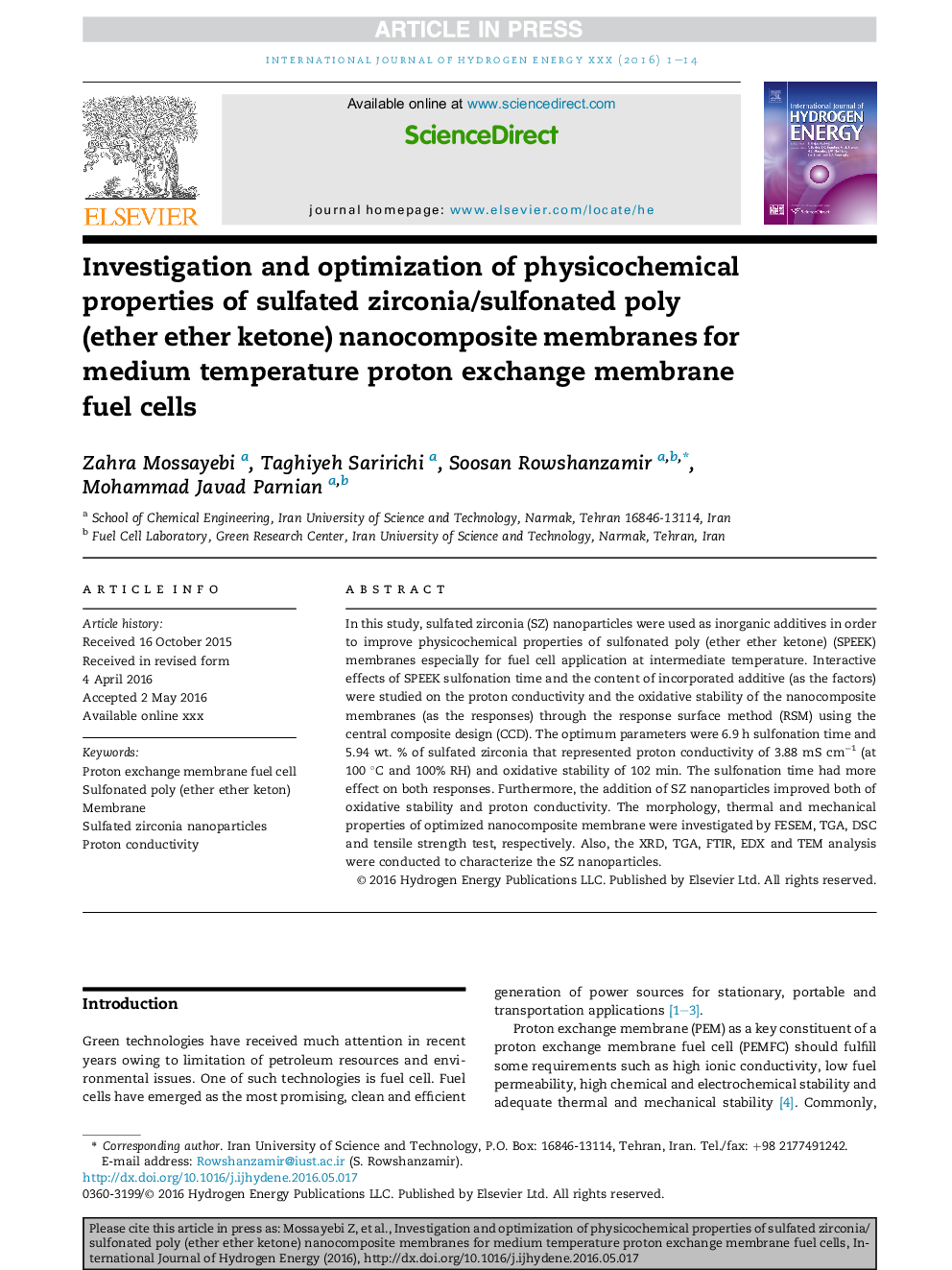| Article ID | Journal | Published Year | Pages | File Type |
|---|---|---|---|---|
| 7710274 | International Journal of Hydrogen Energy | 2016 | 14 Pages |
Abstract
In this study, sulfated zirconia (SZ) nanoparticles were used as inorganic additives in order to improve physicochemical properties of sulfonated poly (ether ether ketone) (SPEEK) membranes especially for fuel cell application at intermediate temperature. Interactive effects of SPEEK sulfonation time and the content of incorporated additive (as the factors) were studied on the proton conductivity and the oxidative stability of the nanocomposite membranes (as the responses) through the response surface method (RSM) using the central composite design (CCD). The optimum parameters were 6.9 h sulfonation time and 5.94 wt. % of sulfated zirconia that represented proton conductivity of 3.88 mS cmâ1 (at 100 °C and 100% RH) and oxidative stability of 102 min. The sulfonation time had more effect on both responses. Furthermore, the addition of SZ nanoparticles improved both of oxidative stability and proton conductivity. The morphology, thermal and mechanical properties of optimized nanocomposite membrane were investigated by FESEM, TGA, DSC and tensile strength test, respectively. Also, the XRD, TGA, FTIR, EDX and TEM analysis were conducted to characterize the SZ nanoparticles.
Related Topics
Physical Sciences and Engineering
Chemistry
Electrochemistry
Authors
Zahra Mossayebi, Taghiyeh Saririchi, Soosan Rowshanzamir, Mohammad Javad Parnian,
